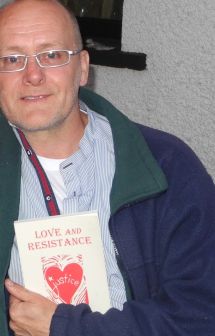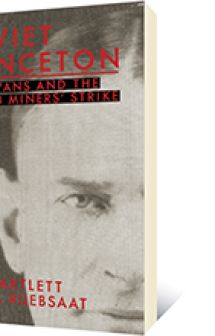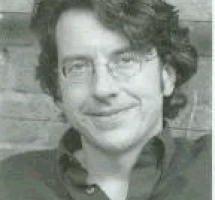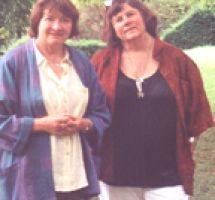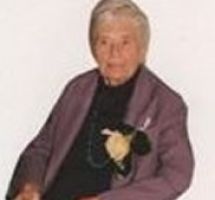The title of this anthology of mainly young activist women from an academic discipline intrigued me right away. I often think of art & activism, sometimes connected, sometimes separate. But Art as Activism implies a relationship of deeper integration. The twenty–one contributors have been graduate students of the editor; in this anthology they express their creativity as activism – a process that reaches out to the community to participate in social transformation. In her introduction the editor, Deborah Barndt of the Faculty of Environmental Studies, York University, Toronto, reflects on the conventional understandings of art, activism and academia and writes, “ We question…the elitism and individualism of conventional art practices …We question how art has become increasingly separate from daily life, and even more commodified as a consumer good in the global marketplace…Similarly we question a narrow understanding of activism that frames mass protests as the primary mode of political action. How we think, converse, write, draw, sing, move…can unveil power relations and transform knowledge production ad everyday actions.”
We are still living in a cold war based mentality that dictates that art is made by trained professionals, art is not political, art is not related to community and art for social change is propaganda, so this book is a very welcome addition to our new awareness that everything is political and everything is connected. Barndt makes it clear that there are many modes and mediums of artistic expression, but most important for her in their relationship to the context in which they are produced and how they are presented to the community. Her important questions that we can recall and ask ourselves are “the why and for whom of artmaking.”
The answers that lie in these diverse essays are richly expressive of many issues, many places, many contexts and forms of art as activism. It is impossible to do justice to every contribution in a review; I choose a few favourites, another reader may choose others that offer some connection or insight with special significance for her.
There are good lessons to be learned from the first essay by Leah Burns who writes about her work with ‘at risk youth’ in Toronto. She is willing to reveal her own self–doubts and to acknowledge her position of privilege and power to the youth with humour…from the beginning when she has to answer the question, “Seriously…are you really an artist?” When the group is asked to make a mural for a food organization that wants it to look ‘professional’ and the staff suggests she can fix it up if it isn’t, she uses the opportunity to explore power dynamics with the youth. She sees her participation as an ongoing cultural conversation that others also participate in the determining of process and the finished work. When she writes about humour, she says it is based on interaction and cannot be done alone and that humour can be a way of connecting divergent to a collective consciousness of taken–for–granted knowledge.
I liked Heather Chetwynd’s essay on voice because so often the most obvious way people are oppressed is to silence them and rob them of their own voices. We speak in the name of children, old people, those who lack languages skills so often, never stopping to think we are stealing their rights of self-expression. Chetwynd writes about her experiences in exploring voices – from singing and chanting to progressing to the realization that “when we raise our voices, we challenge our perception of weakness, challenging those who have power over us and claiming our own power.” Song is the sound of social resistance through which many groups have expressed their stories, their history and their power.
Salmon Tales: Eco-art Activism, really affected me as a west coast person who grew up with neighbours who dip netted and rack dried salmon on the banks of the Fraser River. Penner, Mack and Bensted started with co-creating banners about salmon for a festival. They wanted to stimulate awareness of salmon–human relationships rather than salmon as a food commodity. The project “has now shifted towards community art, activism and education in a community context…we argue that visual art allows us to see and experience the world in a radically different way. It also allows us to focus on why salmon matter.” The banners illustrated in this book show how salmon as well as people have been colonized and that colonization of “the worlds above and below water” are connected and equally important. What began as an academic project has moved into the community, changing and growing and reclaiming community through stories and discussion as well as visual art. I hope it comes to Victoria soon and politicians who love ‘fish&ndashfarming’ go to see it.
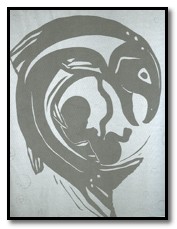
Illustration of salmon giving birth to human baby.
Oona Padgham has contributed an essay & interview on Arts in Detention: Creating Connections with Immigrant Women Detainees. Not a subject most us know or want to know much about. Padgham says we detain thousands of people in Canada who have committed no crime, in jails and hotels that are converted to jails. Families are separated; the children usually stay with their mothers in waiting process that may last months and end in deportation or residence in Canada. Padgham belongs to a group, No One is Illegal, which organizes in solidarity with immigrants of all status. This group started an arts group project with women and children in detention and in this essay Padgham tells the project story with three other women who worked with the detainees. Sima Zerehi says that art production is a way of communication for people who cannot always connect in a common language; Farrah Miranda says art gives the women a chance “to do something that is actually human.” The project includes women and children expressing their anxiety, fears and hopes but it also allowed for some of the women to start their own art projects. The political nature of the art workers and the group they belong was not hidden. Jean McDonald said the project reveal the needs of women detainees – some end up there because they reported a sexual assault or domestic abuse – showing the urgent need for a Don’t Ask, Don’t Tell policy for human service workers.
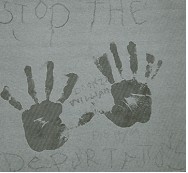
photo of children’s art: STOP THE DEPORTATION.
The project gave the women the opportunity to meet and work with one another, to distract them from their painful reality and uncertain future. Children could play together and women could share childcare. The art was integrated into the context of No One is Illegal’s community work and it was exhibited publicly as an outreach and educational action, but also to show powerful creativity of people we repress to our larger society.
Padgham writes that, “The art itself is an outlet for frustration and pain, but also an opportunity to express hope for the future and joy in life.”
Wildfire is a valuable and inspiring contribution to the culture of creative social transformation; a place where activists, artists, academics participate together in the struggle for a justice and peace.

 Follow
Follow

